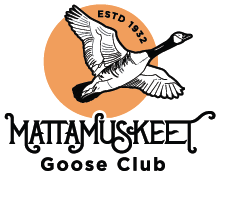Waterfowl hunting has become something of a legacy in the Southeast, particularly here in our home state of North Carolina. So much of the topography in this area is recognized as being ideal for various waterfowl species to live and thrive. From the mountains in the west to the coastline in the east, the abundant lakes and wetlands hold ample opportunity for hunters to hone their craft as they continue the tradition of this region.
But how did this start? How did the Southeast become synonymous with waterfowl hunting? There’s quite a bit of history to unpack, and it dates all the way back to the colonial period. From that point forward, it gradually became a part of North Carolina’s national identity. Let’s step back in time, and we’ll take a closer look at the events of the past and how they affect the industry today.
Before the Europeans even traveled across the Atlantic and set foot on the continent now known as North America, the Native Americans in the Southeast already took full advantage of the region’s unique topography. The combination of sheltered wetlands and lush vegetation created the perfect habitat for ducks and other migratory birds. The Native Americans acknowledged the abundance of these resources, and they hunted waterfowl as a source of food for their families.
Upon their arrival in the New World, the colonists were awed by the flocks of waterfowl, which arrived in great numbers. Through the decades, hunting was a source of nutrition when agriculture was not viable. It wasn’t until the early- to mid-19th century, long after the founding of the United States, that hunting for sport became very popular in the area. The Currituck Shooting Club was founded in 1857, the second to be incorporated in the United States. This gave rise to a number of other prestigious hunt clubs in the area, all of whom wanted to take advantage of the abundant waterfowl population.
But the legacy of waterfowl hunting is not limited to sport. It’s an important part of our state’s economic and commercial history. The massive wave of hunting in the late 19th century and early 20th century prompted concern about the population numbers. This led to the Migratory Bird Treaty Act of 1918 and, eventually, the formation of the North Carolina Wildlife Resources Commission in 1947. A recent study done by the Wildlife Commission shows that hunting in NC contributes $1 billion to the economy. This further demonstrates just how integral waterfowl hunting has become and its impact on the history of the Southeast.
Here at Mattamuskeet Goose Club, we’re proud to uphold a Southern tradition by continuing the legacy left by our 22 founding members. Learn more about our history, or join the Founder’s Club today in support of our historic relaunch!












